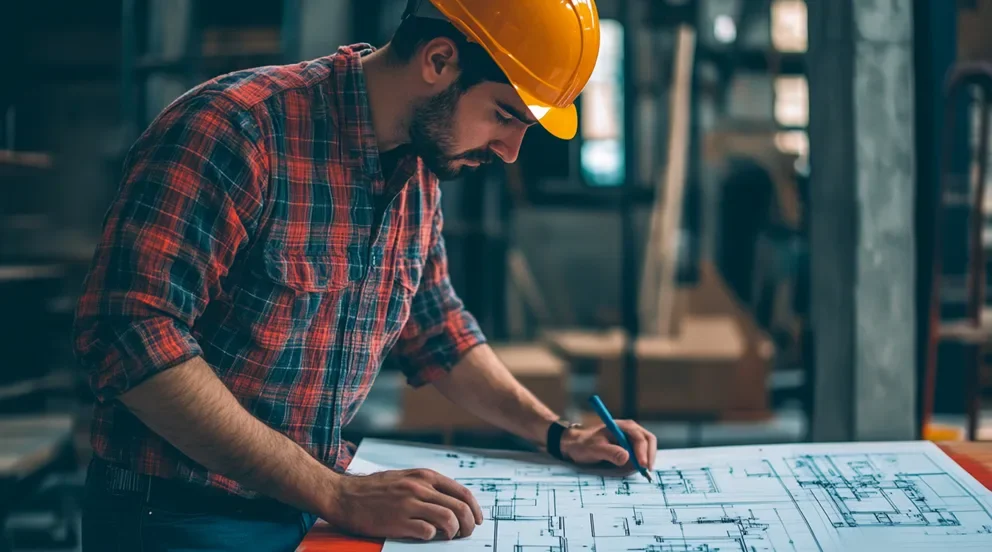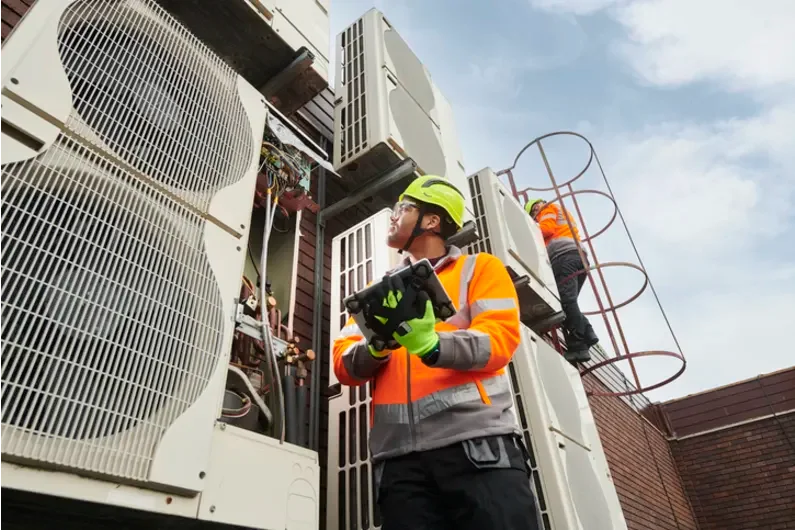Rough-in is a term used to describe the initial stage of installation for various products, such as electrical wiring and plumbing. It involves the installation of the necessary components and structural elements that are needed to provide the basic framework for a finished product.
During the rough-in stage, the components are connected in such a way that they provide a basic outline of how the finished product will look. This includes connecting the electrical wiring and connecting the plumbing lines. The components are usually not permanently attached during the rough-in, as this will be done during the final installation.
In electrical wiring, the rough-in stage involves the installation of electrical boxes and outlets, as well as running the wires between them. It is important that the wires are connected correctly and that the boxes are properly secured to the walls. The purpose of the rough-in is to ensure that the electrical system is safe and that it meets all local codes.
In plumbing, the rough-in stage involves the installation of pipes and fittings, as well as connecting the water and drain lines. This process may also include the installation of water heaters and other fixtures.
Rough-in is an important step in the installation process, and it is important to make sure that it is done correctly. If it is not done correctly, it can lead to dangerous conditions and potentially costly repairs. It is important to consider the safety of the people who will be using the finished product, as well as the safety of the property itself.
What types of products require rough-in installation?
Rough-in installation is required for many different types of products. Electrical wiring and plumbing are two of the most common products that require rough-in installation. Other types of products that require rough-in installation include HVAC systems, lighting fixtures, and security systems.
In electrical wiring, the rough-in stage involves the installation of electrical boxes and outlets, as well as running the wires between them. It is important that the wires are connected correctly and that the boxes are properly secured to the walls. The purpose of the rough-in is to ensure that the electrical system is safe and that it meets all local codes.
In plumbing, the rough-in stage involves the installation of pipes and fittings, as well as connecting the water and drain lines. This process may also include the installation of water heaters and other fixtures.
HVAC systems also require a rough-in stage. This involves installing the necessary ductwork, vents, and registers to ensure that the system is properly connected and functioning correctly.
Lighting fixtures also require a rough-in stage. This involves connecting the necessary wiring, securing the fixtures to the walls, and connecting them to the electrical system.
Finally, security systems also require a rough-in stage. This involves running the necessary wiring and connecting the components to the system.
Rough-in is an important step in the installation process, and it is important to make sure that it is done correctly. If it is not done correctly, it can lead to dangerous conditions and potentially costly repairs. It is important to consider the safety of the people who will be using the finished product, as well as the safety of the property itself.
What are the steps involved in the rough-in process?
The steps involved in the rough-in process depend on the product being installed. Generally, the process involves installation of the components and structural elements that are needed to provide the basic framework for a finished product.
In electrical wiring, the rough-in stage involves the installation of electrical boxes and outlets, as well as running the wires between them. It is important that the wires are connected correctly and that the boxes are properly secured to the walls. The purpose of the rough-in is to ensure that the electrical system is safe and that it meets all local codes.
In plumbing, the rough-in stage involves the installation of pipes and fittings, as well as connecting the water and drain lines. This process may also include the installation of water heaters and other fixtures.
HVAC systems also require a rough-in stage. This involves installing the necessary ductwork, vents, and registers to ensure that the system is properly connected and functioning correctly.
Lighting fixtures also require a rough-in stage. This involves connecting the necessary wiring, securing the fixtures to the walls, and connecting them to the electrical system.
Finally, security systems also require a rough-in stage. This involves running the necessary wiring and connecting the components to the system.
The rough-in process should be done carefully to ensure that all components are correctly installed. It is also important to make sure that the wiring is correctly connected and that all components are properly secured. The rough-in should be done in accordance with all local codes and regulations to ensure the safety of the people who will be using the finished product, as well as the safety of the property itself.
What safety considerations should be taken into account when performing rough-in installation?
When performing rough-in installation, it is important to take all safety considerations into account. Electrical wiring should be installed according to local codes and regulations, as well as the manufacturer’s instructions. It is also important to make sure that all electrical connections are secure and not exposed.
Plumbing work should be done carefully and any pipes or fittings that may become a hazard due to movement or vibration should be secured properly. Water heaters must be installed in accordance with their manufacturers’ instructions, and any necessary shutoff valves should be hooked up for added safety.
HVAC systems need to be inspected before use to ensure that all components are connected properly and functioning correctly. All ductwork, vents, registers, and other parts should be installed securely and safely.
When installing lighting fixtures, it is important to make sure that the wiring is connected correctly and that all components are properly secured. It is also important to check the wattage of each fixture to make sure it does not exceed the maximum wattage rating of the circuit it is connected to.
Finally, when installing a security system, all wiring should be carefully routed and connected as per manufacturer instructions. All connections must be secure and not exposed in order to protect against tampering or accidental damage. Careful consideration should also be given when mounting cameras or other devices so as not to interfere with any other systems or appliances on the property. All components should meet local codes and regulations for safety purposes.
What are the potential risks of not performing a proper rough-in installation?
The potential risks of not performing a proper rough-in installation are numerous. Poorly installed electrical wiring can create dangerous fire hazards and potentially cause electrocution. Improper plumbing connections can lead to leaks, water damage, or even flooding of the property if the water is not shut off correctly.
HVAC systems that are improperly installed can be inefficient and may cause air contaminants to enter into living spaces. Lighting fixtures that are not properly secured or wired can become loose and fall, which could result in serious injury or fatalities. Finally, security systems with exposed wires or poorly connected components could be easily tampered with or disabled, leaving the property vulnerable to theft and other criminal activities.
How can mistakes in the rough-in process be avoided?
Mistakes in the rough-in process can be avoided by taking proper precautions and following all local codes and regulations. It is important to read all manufacturer instructions for any components being installed, as well as to consult a professional if uncertain of the installation procedure.
It is also important to take regular safety checks throughout the entire process, ensuring that no exposed wiring or loose parts remain after each component is installed. Finally, it is essential to make sure all components are correctly connected and secured before moving on to the next stage of installation. With these measures in place, mistakes in the rough-in process can be avoided.
What are the differences between rough-in installation and final installation?
Rough-in installation is the process of installing all necessary components and wiring in preparation for their eventual use. This includes connecting electrical wiring, plumbing pipes and fittings, HVAC systems, lighting fixtures, and security system components. It does not include testing or finishing any of these components.
Final installation comes after the rough-in stage is complete. During this step, each component is tested to ensure proper functionality before it is connected to its power source. This allows for final adjustments and troubleshooting if needed. After testing has been completed successfully the component can be used normally with confidence that it will operate properly.
How does the rough-in stage of installation differ for electrical wiring and plumbing?
The rough-in stage of installation is similar for both electrical wiring and plumbing. For electrical, this includes running wire through walls and ceiling cavities to designated outlets, switches, or other fixtures. Junction boxes must be installed in order to make connections between the wires and components. Plumbing systems require pipes to be run from the main water supply line to each fixture location, with fittings being used where necessary. Both involve connecting components together without testing them at this stage.
However, there are some key differences between wiring and plumbing rough-ins; for instance, all electrical connections must meet local codes for safety standards whereas plumbing only requires that it meets minimum requirements for functionality purposes. Additionally, electrical rough-ins must consider wattage limits of each fixture and circuit breakers, while plumbing rough-ins must include the proper fittings for drainage. Both processes require attention to detail in order to be successful.



